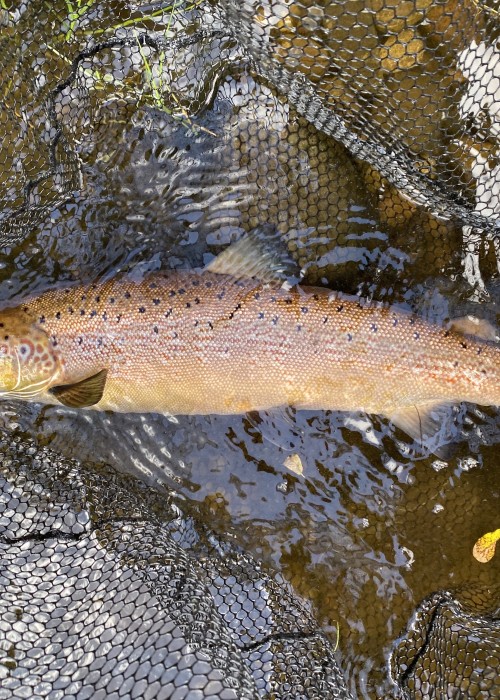
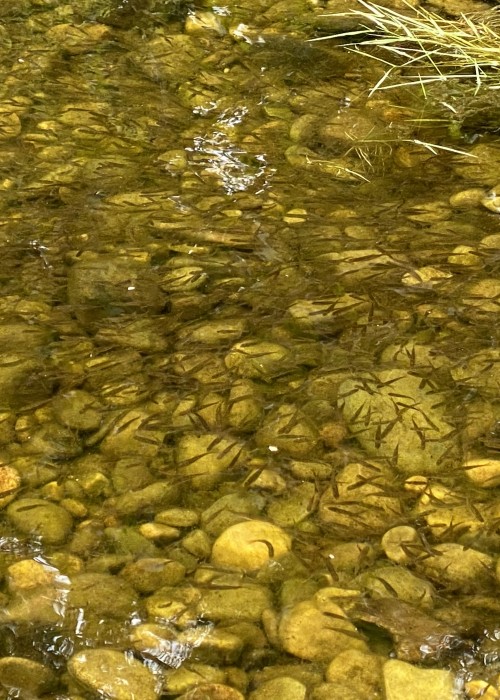

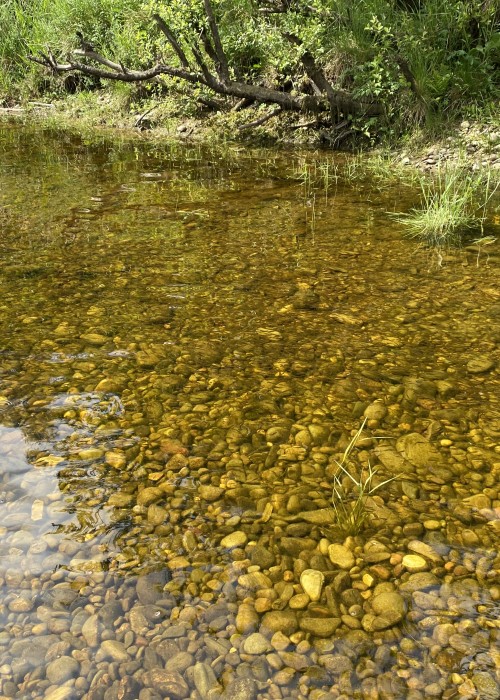
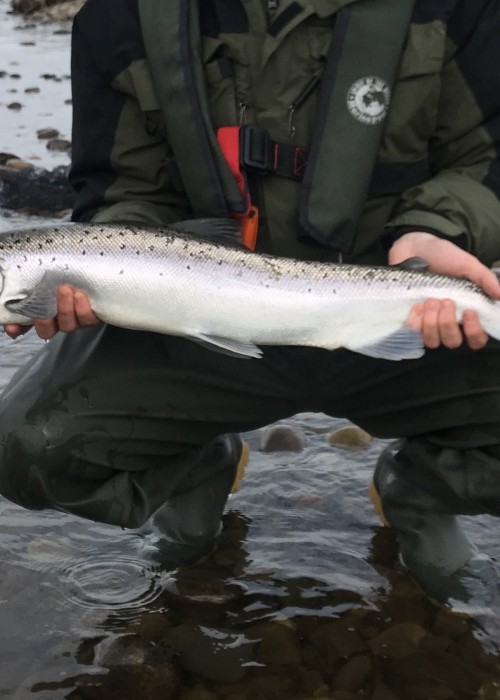
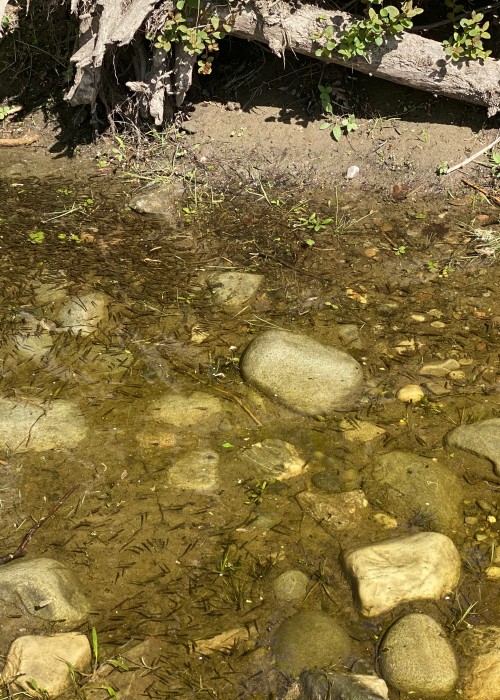
Professional Scottish salmon fishing guide advice on when Atlantic salmon spawn in the rivers of Scotland.
This is an often asked question but very easy to answer as 'Mother Nature' is not as complex as many scientists would have you believe. It's the first hard frosts each Winter that triggers the wild Atlantic spawning season and nothing else. On the higher headwater ground of the upper reaches of many Scottish salmon rivers spawning will occur sooner than in the lower reaches of the very same river. This is the main reason the lower lying River Tweed salmon fishing season extends to the end of November while most other Scottish salmon rivers close at the end of September or by the end of October. Depending on the temperature trigger detailed above Atlantic salmon normally spawn between October and January each year.
In years where there's an Indian Summer type of weather pattern that extends into late Autumn spawning can therefore be 'naturally' pushed back later than previous years therefore technically river opening dates should be assessed annually as it's not good 'river husbandry' to be fishing in and about spawning fish which can sometimes be the case following milder Winters on rivers like the Tay that rigidly opens on the 15th of January each year regardless of a river assessment. Static100 year old river opening & closing dates do not syncronize well with Mother Nature and all her 'natural' fluctuations so a closer review of temperatures and salmon spawning numbers would be the logically correct thing to do for salmon stock protection and to effectively set 'conservation orientated' fishing season annual opening dates.
The other issue in my opinion that's not assessed well enough is when rivers open during the early Spring and there are still many kelts (spawned salmon) in the river system. Logic dicatates that these fish are (or certainly have been) key broodstock and whether they survive to return to the salt water and another ocean feeding cycle or not they should at least gain the respect of salmon fishers & fishery management and be left alone until the bulk of them have had a chance to either defend their gravel borne eggs and die naturally in the river or make it back to sea to start feeding and healing again without the often terminal stress of an angler capture. Kelts are generally easily caught and are already weakened and operating on very low 'battery power' (compared to a pre-spawned fish) so although they are out of condition and not directly killed by anglers the stress of capture often results in their eventual death where otherwise they'd have stood a far better chance of survival. To disrespect a salmon kelt is completely illogical as these fish have successfully hit their biological objective and should be held with the utmost respect for keeping the river spawning cycles intact against all odds.
Watching spawning salmon is fascinating as often there are territorial battles going on under the water between competing male cock salmon who are fighting over the female hen fish as you'll see in this accompanying video. When working daily on the River Tay even through the Winter months when painting boats and taking care of heavy duty tree limb pruning or other closed season salmon beat duties I used to love sitting for a while watching the various commotions of spawning salmon and easily spotting their light coloured gravel redds during or after spawning took place. In the 70's when I used to frequent the Tay on my Summer school holidays my late ghillie mentor Willie 'the ghillie' Laird would be out in the low water of Summer in his thigh waders raking silt off his beat's spawning areas in preparation of the Winter spawning season which was a salmon redd management technique highly unlikely done on the Tay in the last 40+ years but in those days it was common practice. Predation control was also high on his agenda (big cannibal trout) during the Summer months to protect his juvenile salmon stocks and maximize his beat's smolt output each year. To learn more about the natural cycles of Atlantic salmon in Scotland consider a close up interview with one via a guided Scottish salmon fishing experience.